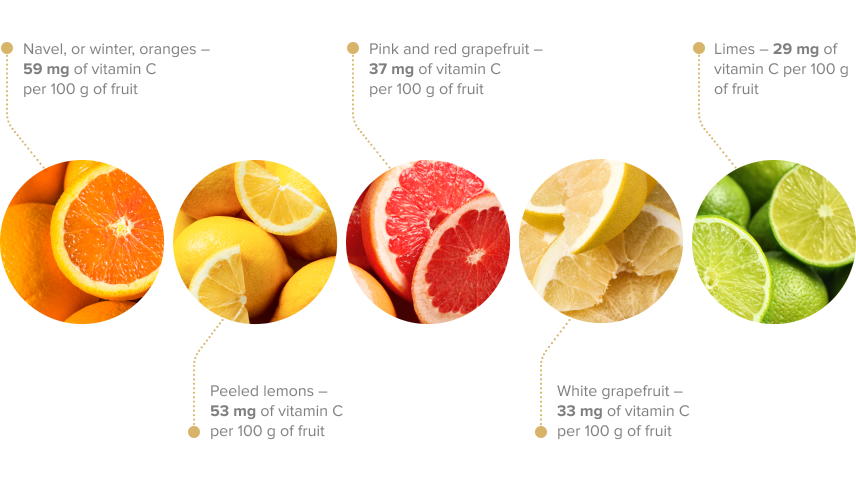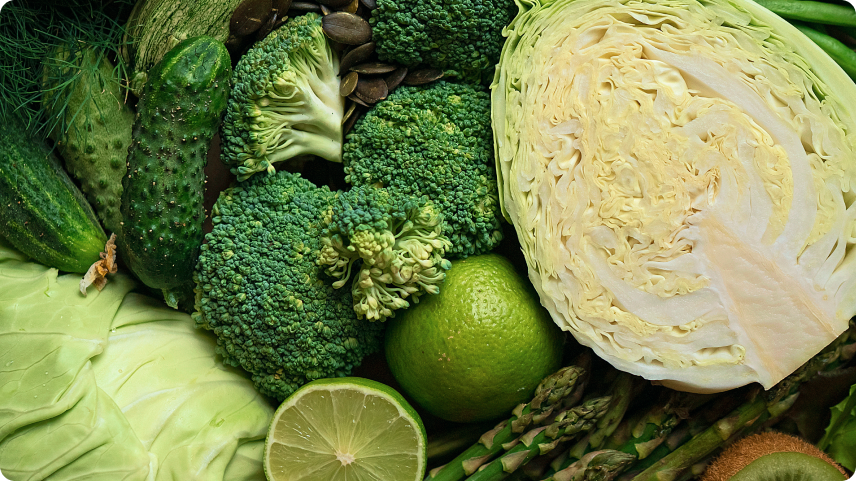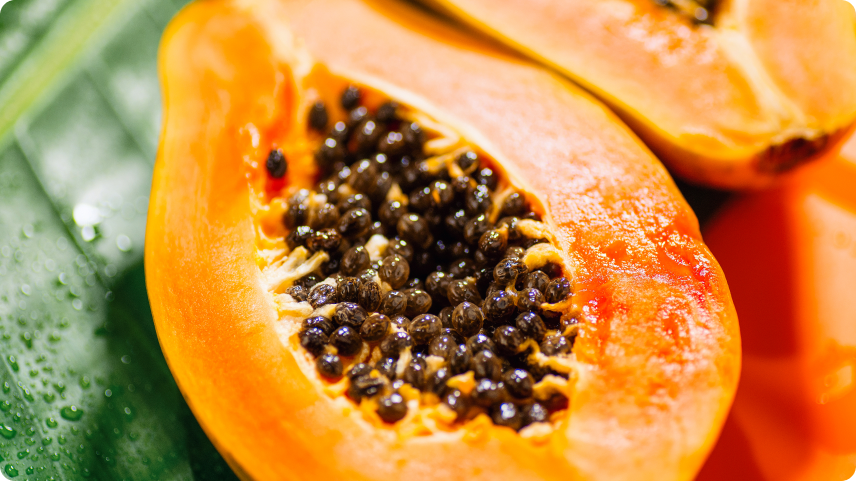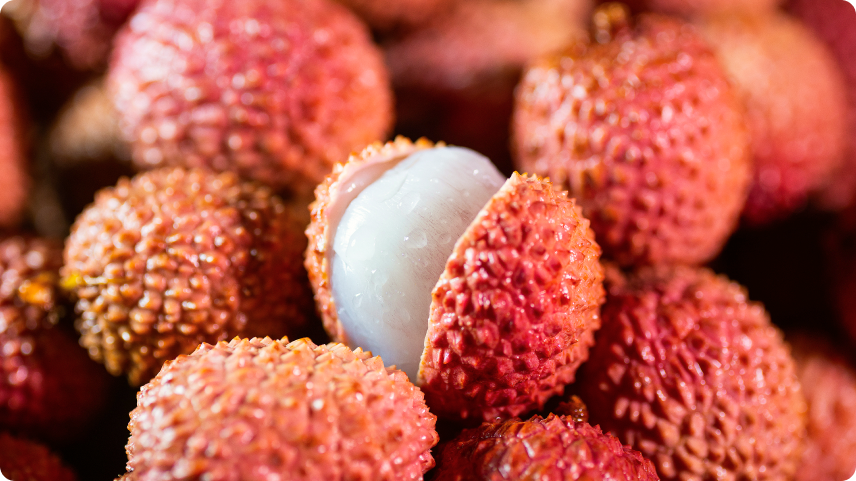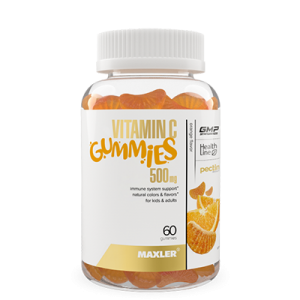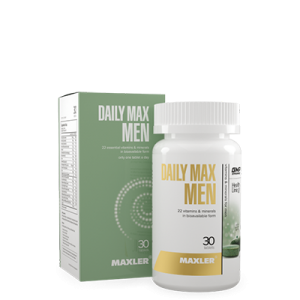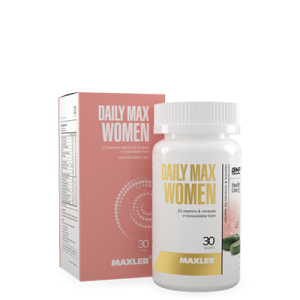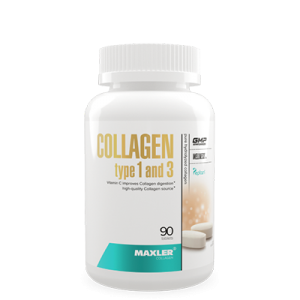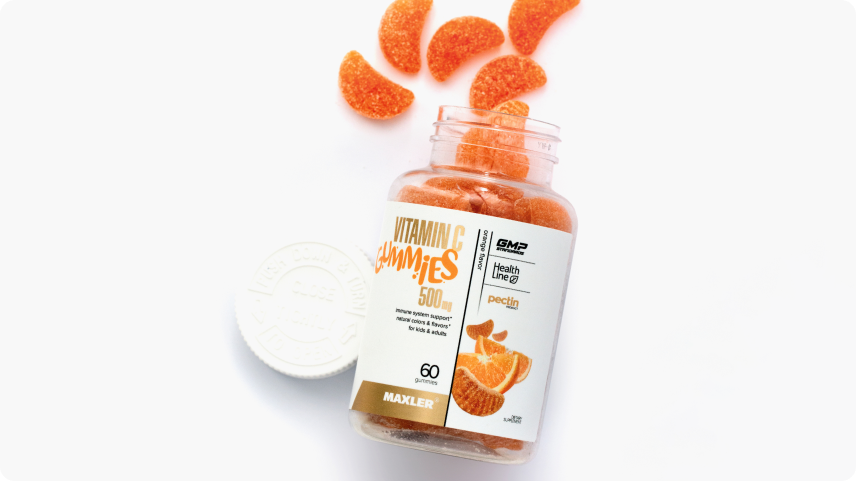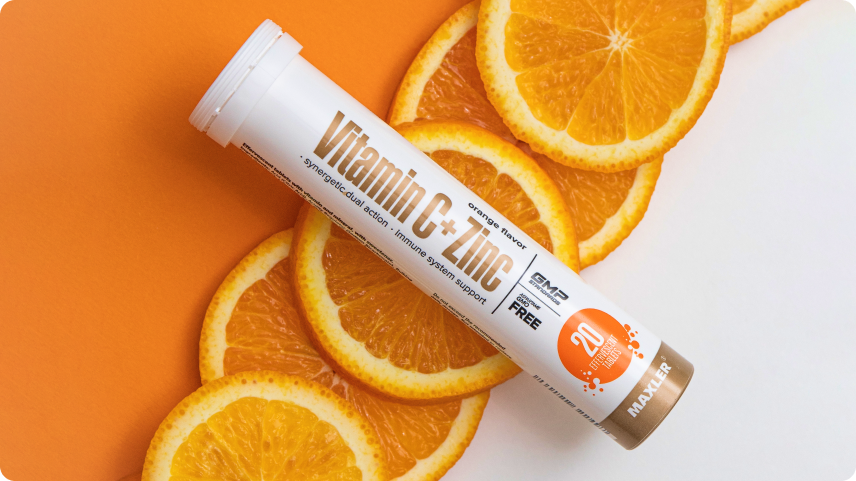Did you also know that humans used to make vitamin C in their bodies, like most animals can? With time, we lost the ability to produce it. Why? It’s because vitamin C turned out to be so common in the foods that we ate, that we didn’t need to make it!
Yet many people strongly associate it with only the citrus fruits. If you’re not a fan of oranges but would like to get plenty of the vitamin, we’ve got your back. There are many foods rich in vitamin C to suit all tastes and lifestyles.
How much vitamin C is essential?
How much vitamin C should each person get on a daily basis? The answer depends on a few factors. These factors include:
- Age. Younger people need less vitamin C. Girls and boys between 14-18 years of age require at least 45 mg of vitamin C a day.
- Sex. Biological sex affects the requirements for vitamin C. Men older than 19 years of age require 90 mg of the vitamin, whereas women require 75 mg.
- Pregnancy. Vitamin requirements may increase during pregnancy and breastfeeding. Pregnant women should increase their intake to 85 mg of vitamin C a day. Lactating women should further increase their vitamin C intake to 120 mg da day.
- Smoking status. Those who smoke need more vitamin C. As a rule of thumb, add 35 mg of vitamin C to your requirements if you smoke.
Remember that these are the recommended daily allowance, RDA. This is the smallest amount of vitamin C that you should get to stay in optimal health. You may get more, as it’s not super harmful in large amounts. The upper tolerable level for the vitamin is 1,800 mg for those between 14 and 18 years of age. For adults, including pregnant and lactating women, the upper tolerable limit is 2,000 mg of vitamin C a day.
There are many health benefits of vitamin C. One of the most well-known benefits of getting sufficient vitamin C is that it allows our immune system to work well. It can help us recover from common colds quicker, and it supports many of the processes in our immune system.
Vitamin C is an important antioxidant. This helps us stay healthy and lower our risk of developing chronic health issues. It may help us keep the heart healthy as well.
This vitamin is also essential for the absorption of other nutrients. Our blood cells require iron, and it is important in helping deliver oxygen all throughout the body. Iron typically comes in two forms – the plant, non-heme, form and the animal form, called heme iron. We’re only able to aborb around 17% of plant iron, making it not very bioavailable. Vitamin C helps increase the bioavailability of iron, helping the body make the most of it. It’s super important for vegetarians and vegans to make sure they pair their iron sources with vitamin C for best results.
Vitamin C is crucial for our collagen synthesis processes. Collagen makes up many tissues in the body, such as skin, bone, organs and nails. The body requires vitamin C for collagen synthesis. This helps keep our bodies moving and our skin looking young and plum. In addition, the antioxidant action of vitamin C can help protect our cells from UV and pollution, supporting visibly young skin.
Foods that are high in vitamin C
Looking to stock up on foods that have vitamin C? Look no further, because this comprehensive list has everything that you need and can look out for next time you go food shopping.
Citrus fruits
Oranges, lemons, grapefruit and limes. These are all citrus fruits that many of us associate with vitamin C. Many people enjoy citrus fruits. They make for a great snack, dessert, or are refreshing when added to water. They can also be fantastic additions to salads and baked goods.
Citrus fruits are fruits rich in vitamin C. Here are some common citrus fruits and their vitamin C content:
- Navel, or winter, oranges – 59 mg of vitamin C per 100 grams of fruit
- Pink and red grapefruit – 37 mg of vitamin C per 100 grams of fruit
- White grapefruit – 33 mg of vitamin C per 100 grams of fruit
- Peeled lemons – 53 mg of vitamin C per 100 grams of fruit
- Limes – 29 mg of vitamin C per 100 grams of fruit
Citrus fruits have a range of vitamin C content depending on which fruit you eat. Therefore, you may have to adjust your intake accordingly to meet the requirements. Alongside the vitamin, citrus fruits are great sources of dietary fiber, calcium, folate, phosphorus, magnesium and the B-group vitamins. They’re also rich in beneficial plant compounds that help support overall health.
Rose hips
You may not quite associate rose hips as a food for vitamin C intake. In fact, you may wonder if they’re a food at all!
Rose hips are pseudo-fruits from some Rosa species, such as dog rose. These fruits are packed with vitamin C, E, B, carotenoids and polyphenols. They are known to have a high amount of antioxidants and may have antimicrobial function.
Wild rose hips contain around 426 mg of vitamin C per 100 grams. That’s almost 5 times the daily recommended amount for men!
You will usually find these sold as dried berries, or you can find extracts from them in tablet form. To use them, brew them as a tea, make jam from them or even make a Swedish rosehip soup!
Broccoli
Do you associate broccoli with vitamin C? Broccoli is a great option for helping you get plenty of the vitamin. In addition, it’s easily available and can be very versatile. Broccoli is a great option for a side, as part of a soup or even when added to pasta dishes.
One hundred grams of broccoli contains around 89 mg of vitamin C, making it pretty much enough to meet your daily recommended allowance. Alongside the vitamin, broccoli is a great source of dietary fiber, with the same serving containing 2.6 grams of dietary fiber. Broccoli is also quite high in protein for a vegetable, with 100 grams providing almost 3 grams of protein. Broccoli is also a fantastic source of antioxidants and beneficial plant compounds like lutein. Lutein can be a great way to support eye health.
Red peppers
Another food rich in vitamin C is the red pepper. This common vegetable is easy to incorporate into many dishes. It makes a convenient snack, or a colorful addition to salads. You can add it to stews, fajitas, stir-fries or anything where a vegetable can be added.
One hundred grams of raw sweet red peppers offers a whopping 128 mg of vitamin C. That’s almost 1.5 times the daily recommended amount for men, and 1.7 times the daily recommendation for women. Alongside the vitamin, peppers offer a range of other beneficial compounds like vitamin C, carotenoids and flavonoids.
What about the other types of peppers, you may ask? Here’s how much vitamin C is in one hundred grams of other pepper types:
- Green bell peppers contain 99 mg of vitamin C
- Sweet orange bell peppers contain 158 mg of vitamin C
- Yellow bell peppers contain139 mg of vitamin C
Therefore, bell peppers in general can be a great way to increase your intake of vitamin C.
Strawberries
Strawberries are bright red fruits popular with many due to their sweetness. Strawberries can be eaten as is, making them a great healthy snack or dessert. You can also use them as a topping for yoghurt, porridge or even salads.
Looking for a new way to enjoy strawberries? Try our protein strawberry yoghurt with granola recipe for a filling and easy breakfast.
One hundred grams of strawberries provides around 60 mg of vitamin C. Strawnerry also contains flavonoids, folate and minerals important for health. Some of the potential benefits of strawberries include their antioxidant, anti-inflammatory benefits as well as their ability to support heart health, a healthy metabolism and even their antimicrobial functions.
Therefore, strawberries are a delicious and a very healthy way to get your vitamin C.
Papaya
If you love exotic fruit, papaya should be on your list for a vitamin C rich food. Papaya can be enjoyed as is, as a snack or part of a fruit salad. In addition, papaya can be used in salads as well.
One hundred grams of raw papaya provides 60 mg of vitamin C.
Papaya is also a source of vitamins A, B, including folate, and E. It is rich in magnesium, potassium and fiber. The fruit contains papain, which is an enzyme which may be beneficial for those who play sport, as it may help heal injuries. There are plenty of phenols in papaya, and it may be beneficial for the heart and our general health.
Tomatoes
Tomatoes are a common food that is also quite high in vitamin C. Tomatoes are very versatile and an easy food to incorporate into many meals.
One hundred grams of raw Roma tomatoes contains only around 18 mg of vitamin C. The same serving of orange tomatoes have around 16 mg of the vitamin, while green have 23 mg. While that may not sound like a lot, it’s worth keeping in mind that a cup of tomatoes is around 180 grams, which will almost double the amount of the vitamin, making tomatoes a good source. Sun-dried tomatoes contain around 40 mg of vitamin C per hundred grams.
Kiwifruit
Kiwifruit have only been around as a commercial crop for a little over a century. However, kiwis have become quite popular for their delicious, tangy green or yellow pulp. They make a fantastic snack and are easily portable.
One hundred grams of kiwifruit provides 74 mg of vitamin C. This is almost the daily dose of the vitamin for women. Gold kiwifruit contains even more vitamin C.
Kiwi is a good source of fiber, potassium, vitamin E, folate, and important phytochemicals. These have antioxidant properties great for supporting our health.
Black currants
Blackcurrants are a type of berry that are also a great vitamin C source. They are native to colder climates and are typically used to color and flavor products. You may find them fresh, dried, or even as jams.
One hundred grams of this berry contains 181 mg of vitamin C, which is pretty much double the recommended daily allowance of the vitamin for men.
Black currants are also a source of important phytochemicals like anthocyanins. They’re known for their antioxidant and anti-inflammatory activity, supporting health and exercise performance.
Lychees
Lychees are another tropical fruit, which may be hard to get a hold of fresh. However, you may find dried or canned lychees – check the labels for added sugars if that’s you preferred type of lychee.
One hundred grams of dried lychees contain around 183 mg of vitamin C, making them a quick and easy way to get more than your daily dose. Raw lychees on the other hand contain around 72 mg of the vitamin. That’s almost the daily recommended amount of vitamin C for women.
Lychees are also good sources of B-group vitamins, vitamin E and K, as well as carotenoids, polyphenols and minerals like copper, magnesium, iron and potassium.
Guavas
Guavas may not quite be on your radar as the best source of vitamin C. However, these delicious fruits are a great option to get your fill of the nutrient.
Guava’s maturity affects the content of vitamin C and other antioxidants. It appears that unripe guava has more antioxidant activity. Vitamin C is also an antioxidant, but conversely, it appears that vitamin C content increases as the fruit matures. Therefore, for maximum vitamin C, pick fully ripe guavas. In addition, the geographical location may affect vitamin C content as well.
Processing can also affect the vitamin C content of guavas. Making nectar from guavas tends to decrease vitamin C. It appears that guava juice retains quite a lot of vitamin C. Dried guava is also high in vitamin C, so dried guava powder can be a great way to get extra vitamin C if you’re not able to find fresh guavas.
Parsley
Do you associate green herbs with vitamin C? If you don’t, it might be the time to start.
Parsley is a herb commonly used in Mediterranean dishes and all sorts of other cuisines.
One cup of chopped parsley contains almost 80 mg of vitamin C. That’s over the recommended daily allowance for women, and almost all of the RDA for men. If one cup of parsley seems ambitious, 10 springs of parsley provide around 13 mg of the vitamin. In addition to vitamin C, parsley is a great source of vitamin A, K, magnesium, folate and even iron.
Parsley has a range of other beneficial properties as well. It has many polyphenols, carotenoids, coumarin and tannins. It may have antioxidant, pain-relieving, gut health supporting and even immuno-modulating properties.
Fresh parsley may be the best for preserving its vitamin C content. The vitamin C content of frozen parsley appears to be lowered by over 60%. Drying decreases vitamin C content by up to 82% when compared with the content of fresh herbs.
Not sure how to use parsley? It makes a great addition to sauces, pasta dishes, meats, fish or even salads. It’s used frequently for Italian cuisine, so look up a new recipe and give it a go! In addition, other herbs like coriander and chives can be good sources of vitamin C. Combine a few and include them in your meals regularly for a little extra boost!
More ways to get your fill of vitamin C
Vitamin C is a vitamin that mostly occurs in vegetables and fruits. Therefore, including plenty of different bright-colored vegetables and fruits in your diet can help you include natural vitamin C in your daily meals. However, we’re not always able to get access to fresh fruits and vegetables. Alternatively, many of us may struggle with accessing vitamin C rich foods during colder months or when these foods are out of season.
During those times, supplemental vitamin C can be a great option.
Supplements are there to be used when needed. They can be a convenient way to add the nutrients you need when you can’t easily access them. Vitamin C supplements are easily available on the market. What should you know about vitamin C supplements?
- Understanding their form. Natural vitamin C in foods occurs as ascorbate. Many supplements contain ascorbic acid, which is another form of vitamin C. The body appears to absorb both forms equally well. However, some people may find that ascorbic acid may cause some stomach discomfort. In that case, sodium ascorbate, which is a salt of the vitamin, may be a better option. Sodium ascorbate may be gentler on the stomach, especially if you take your supplement before eating.
- Decide on your dosage. Some people would like to get a little additional vitamin C during the winter months to help keep their immunity strong. Others may need to address a deficiency. Alternatively, you may be looking ahead to stock up on a supplement for when you’ll be recovering from the seasonal flu. For each of these purposes, you may need a slightly different dosage. Those who would like to support their general health may require lower doses than those trying to address a deficiency. If you’re not sure about the dosage you should be taking, consult with a medical professional.
- Choose quality. Supplements should contain plenty of the active ingredient and little else. Therefore, it’s important to choose brands and manufacturers you trust. Look for those brands which are open about their quality standards. Pay attention to ingredient lists to avoid those with lots of filler or things you don’t need. At Maxler, we take quality seriously, which is why all our products are made on GMP and IFS-certified factories. We believe that you deserve effective supplements that won’t break the bank.
- Check if you’re already getting vitamin C. If you take multivitamin complexes, chances are that they may already contain the vitamin. Other supplements like collagen, iron, beauty or immune supplements may also contain the vitamin. If you’re considering additional vitamin C, make sure that your overall intake stays within the safe amounts.
- Pick the right form. Supplements come in many forms. Vitamin C is a water-soluble vitamin; therefore, it can be dissolved in water. Common forms of vitamin C supplements include tabs, effervescent tablets, gummies, and powder forms. Powders and effervescent tablets make it easy to drink if you’re not into swallowing pills. They can also be easily added to other drinks and smoothies, making them convenient. Powders and effervescent tabs may allow for a more bioavailable supplement, as it will fully dissolve. Tablets on the other hand don’t always fully dissolve in the stomach. However, tablets may suit those who are constantly on the move, as they’re easily portable.
- Help yourself be consistent. One of the most important aspects of taking a supplement is staying consistent. Taking something once isn’t going to work miracles, despite us wanting to. Therefore, choosing a supplement that will easily fit into your routine is a good idea. Consider what form of supplement is easier for you to include, when you’re going to take it, whether you travel a lot. Some supplements may be flavored and others won’t be, so that’s also something to consider.
We have a range of vitamin C supplements at Maxler. Maxler Vitamin C Gummies are a great option for the whole family. The juicy orange gummies are pectin based and contain plenty of vitamin C for immune support.
Our multivitamin complexes, VitaMen and VitaWomen, as well as Daily Max Men and Daily Max Women also contain vitamin C. They provide all the necessary nutrients, including trace elements and addition herbal ingredients to support active people.
All of our collagen supplements are also enriched with vitamin C for better bioavailability.
Getting vitamin C from foods and supplements is quite straightforward. Many common vegetables, fruits and berries contain plenty of the nutrient. It’s best to aim to meet your daily requirements of the vitamin through foods that are high in vitamin C. However, that may not always be possible. When you’re low on the vitamin, a supplement may help. Ensure that you choose quality supplements with a large enough dosage that fit your lifestyle. Remember that to stay healthy and full of energy, you should make sure that you’re eating a healthy diet, exercising and getting plenty of sleep!


